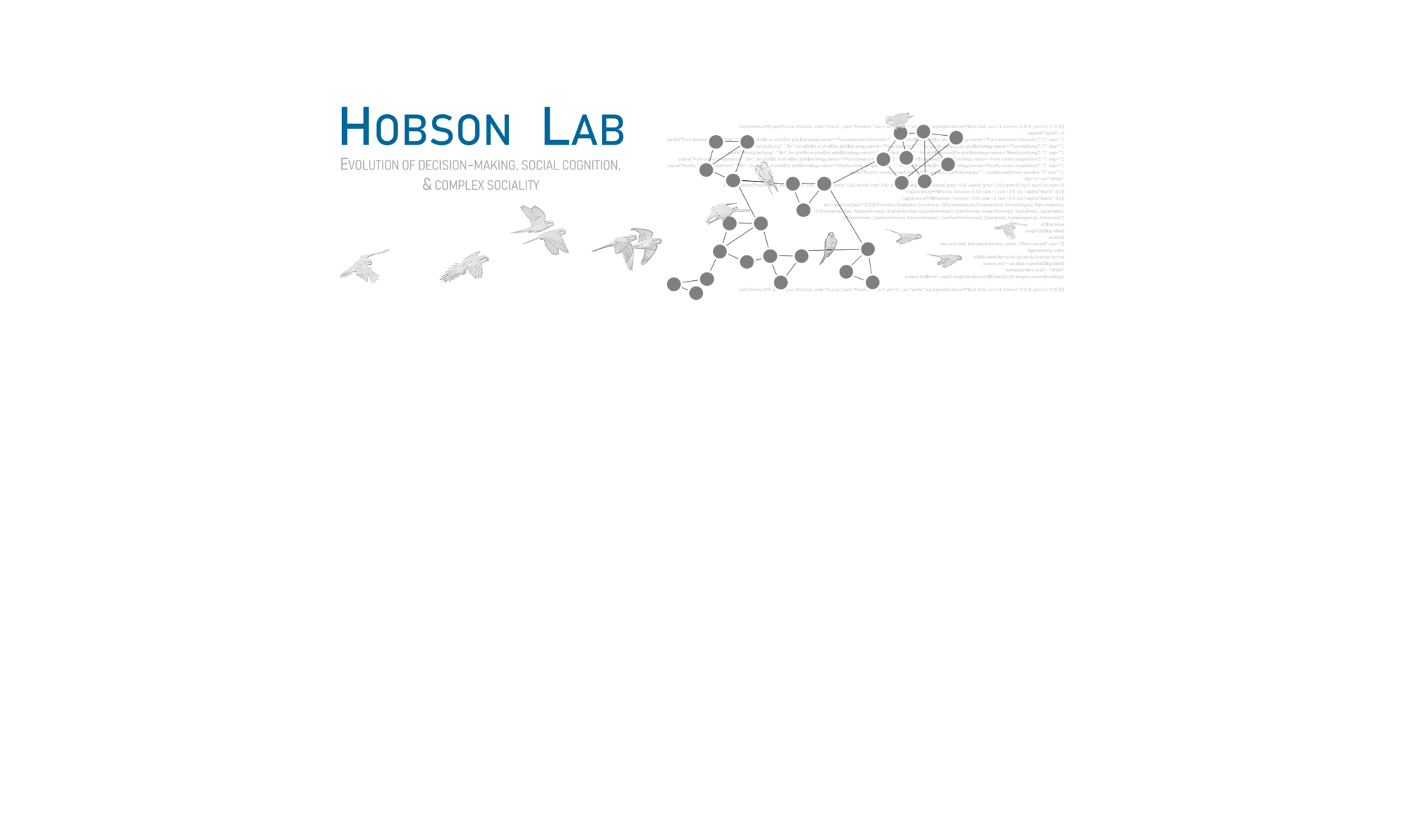R-E-S-P-E-C-T in the Animal Kingdom
The animal kingdom, from a colony of ants to a shrewdness of apes, is rife with social hierarchies, and a new study is trying to figure out how everyone finds their place in the world
By Stacy Kish Email
Many animals must navigate complex social structures in life. The non-stop jockeying for position may be exhausting, but dominance in social hierarchies is baked into the fundamental fibers of our existence.
“Social status is a central part of our experience in life,” said Simon DeDeo, assistant professor of social and decisional sciences at CMU and an external professor at the Santa Fe Institute. “Status hierarchy is older than the eye. It is ancient.”
DeDeo and his colleagues sought to understand how animals function within established dominance hierarchies, which can affect the distribution of food and selection of mates. Using new computational methods, they examined a century of observational data to determine how animals use aggression to structure their fights within their community’s social structure. Their study identified three patterns – fighting with much lower-ranked members (downward heuristics), fighting with close competitors and bullying – that animals use to get ahead within their communities. The results of their study were published in the March 3 issue of in PNAS.
“This project provides insight into the connection between social decision-making and information,” said Elizabeth Hobson, assistant professor at University of Cincinnati and first author on the study. “We can now classify different general patterns that animals use to pick their fights.”
It is clear that a pecking order exists within any social structure. Placing these interactions on the same scale for comparison is the challenge. According to DeDeo, it all begins with respect or lack of it.
“Everybody can be a jerk in the animal kingdom,” said Hobson. “When there is limitation of resources, you are going to have competition and that often shows up as aggression.”
Social animals exhibit behaviors that are modeled around hierarchical dominance, and the behaviors that emerge depend on the rank the member holds within the group. According to DeDeo, aggression is not about causing harm but about establishing and maintaining status within the confines of the social group. The question of whether animals within the hierarchy “know” about their own rank and the ranks of other members in their group is a tricky one to answer. While experimental studies can sometimes address it, those experiments are very time consuming and only work on some species.
“The neat thing from our perspective it that the basic structural features of dominance hierarchies are remarkable consistent from ants to fish to primates to elephants,” said Hobson. “This gives us a unique opportunity to compare the social systems of very unrelated species.”
DeDeo and his colleagues took an interdisciplinary approach to address this question. The team – a biologist, an economist and a behavioral scientist – developed a new computational method to dig into the observational datasets to evaluate how animals structure their social relationships to understand how the group members make biologically relevant social decisions.
The team developed a network of interactions that spans 85 species and consisting of 172 social groups. Using this data, they assigned ranks to the animals in the group and used computational methods to identify the strategies animals employed to fight within their community.
They identified three aggression strategies. Most animals display downward heuristics or fighting with lower-ranked opponents (77%). Surprisingly, a smaller fraction of animals (22%) engage directly with their peers (close competitors) or bully members of their cohort that hold a much lower status in the group.
“I expected more complex patterns, especially for close competitors, for species that have large relative brain size, but we actually saw them popping up across a range of species in the data set,” said Hobson. “We do not know if it is because these animals may have more cognitive skills than we have given them credit for or if there is a cognitive shortcut that helps them get to these more complex social dominance patterns with less cognitive effort.”
The team found that bullying is common among all species, even species that are not normally associated with aggression. They also found that social dominance patterns can vary from group-to-group within the same species. While it remains unclear why dominance strategies differs among groups, their results suggest that social behaviors can change according to the context in which individuals interact.
“The same species can manifest all of these strategies,” said DeDeo. “There is flexibility. It is not preprogrammed or genetically determined.”
DeDeo notes that the observational data consists of short-term, day-to-day rank structures. It does not examine the triggers that could cause the group to restructure the social order, like drought or illness. In addition, the team was unable to find any evidence that the number of individuals in the social system could be consistently used to explain which social dominance pattern each group employed.
Ultimately, the team believes this approach could be critical for understanding human behavior. Because of the generality of the method, it could be applied to a variety of scenarios, from grade school playgrounds to corporate boardrooms. It could also offer a window into understanding the aggressive patterns that grow around social media platforms.
“[Social status] is a biologically ancient idea sitting in our heads today,” said DeDeo. “This methods allow us to look at the larger structural function of disrespect and how it evolves over time.”
DeDeo and Hobson were joined by Dan Mønster at Aarhus University on the project titled, “Aggression heuristics underlie animal dominance hierarchies and provide evidence of group-level social information.” The project received funding from the Arizona State University-Santa Fe Institute Center for Biosocial Complex Systems, the Santa Fe Institute, Independent Research Fund Denmark, The Interacting Minds Center and the Army Research Office.





